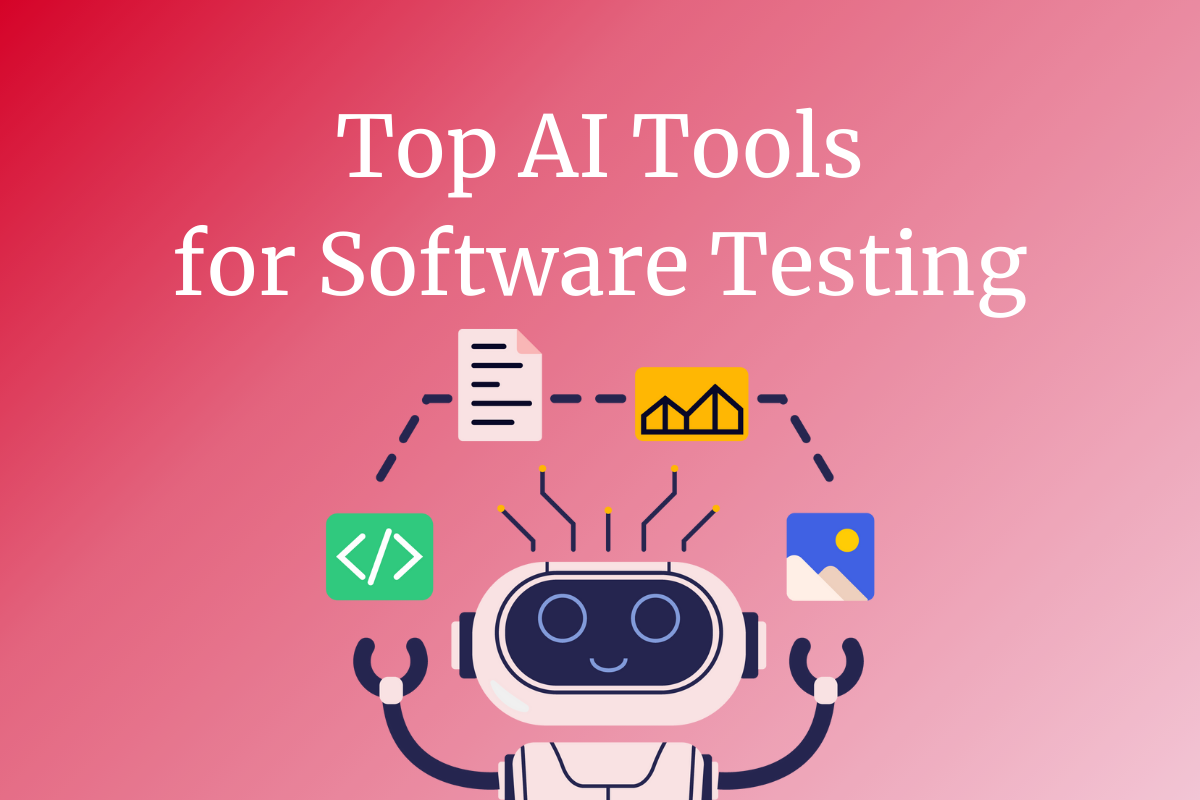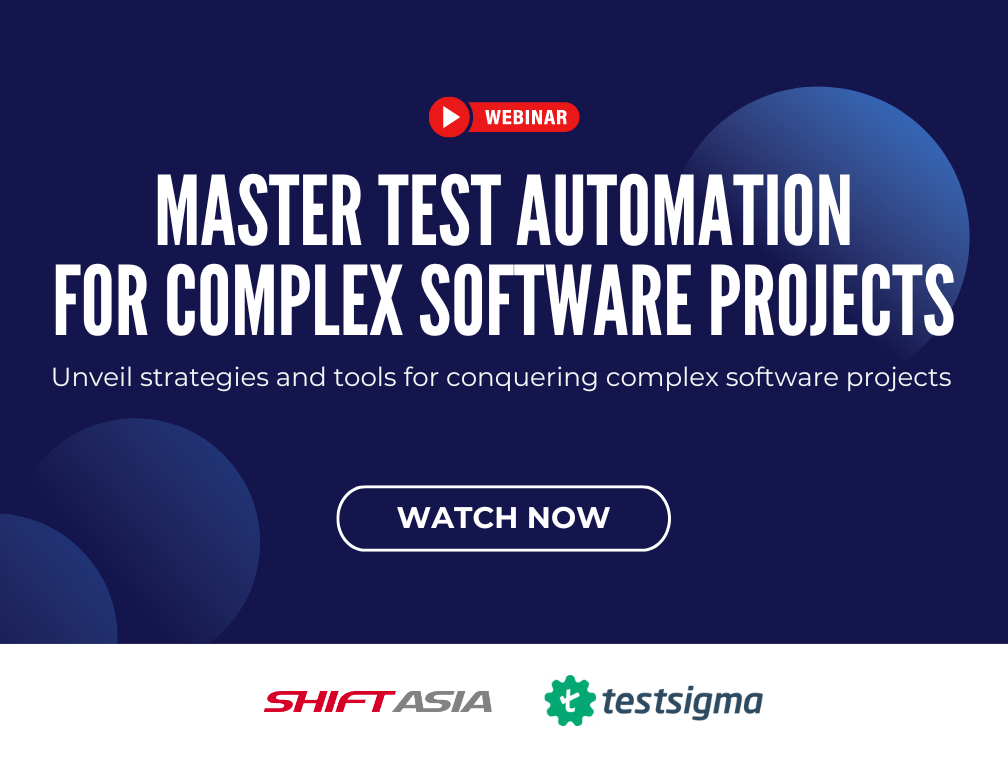With companies embracing rapid development strategies to gain an early foothold in the market and adapting to this accelerated software development, software testing automation has transitioned from optional to essential. Firms are integrating continuous integration (CI)/continuous delivery (CD) to streamline development and minimize manual effort. Automation testing seamlessly integrates into modern DevOps environments, delivering the most reliable outcomes.
Automation testing encompasses various types, with front-end and back-end testing being the most prevalent. Back-end testing involves validating the system components, excluding the user interface, such as APIs, Databases, third-party library calls, and server performance. While back-end testing may appear intricate, the availability of back-end automation testing tools simplifies the process significantly.
What is back-end automation testing?
Back-end automation testing involves verifying the components behind the application, including the database, Application Programming Interface (API), and third-party library calls, among others.
Testing is generally classified into two types:
- Front-end testing
- Back-end testing
Front-end testing concentrates on the visible aspects of the application, such as the user interface, styles, alignments, borders, and fonts. Additionally, it evaluates the functionality using the UI. Front-end automation tools are employed for conducting front-end testing.
On the other hand, back-end testing focuses on the components running in the background, like the database, API, and libraries. At times, back-end testing also addresses application infrastructure and performance. Several back-end automation tools are available to automate back-end testing tasks. Unlike front-end testing, back-end testing may be more complex, as it demands an in-depth understanding of technical aspects beyond just application functionality. However, the right tools can alleviate this complexity.
What types of tools are used for back-end automation testing?
Back-end testing focuses on non-UI components such as API calls, server-side tasks, and database queries, unlike front-end testing, which deals with visible elements and user interactions. In back-end testing, the emphasis is on validating the functionality of these components rather than visual features or styles.
For instance, when testing an API, testers must send requests with predefined parameters and analyze the response, including text, status, and error codes. This process doesn’t involve any visible components or styles.
Database testing is another essential aspect of back-end testing, where testers execute a series of queries on the database and verify the expected data in the response. This type of testing requires a direct connection to the database server, with queries sent and processed on the connected server.
Like other back-end testing tasks, database testing doesn’t rely on a user interface. Instead, it often involves using command line tools or programmatic code to verify the necessary.
Top 7 Back-end Automation Testing Tools
As mentioned earlier, back-end testing is inherently more complex than front-end testing. Withting process can be time-consuming without the app quick, potentially delaying the delivery cycle. Back-end automation testing tools offer the capability for automation similar to front-end automation tools. However, it is important to note that not all automation testing tools support back-end testing.
Below are the most popular back-end testing tools we have personally hand-picked out among the endless number of back-end automation testing tools you come across on the market.

1. Testsigma
Testsigma is an advanced AI-driven tool offering comprehensive front-end and back-end testing support. Its capabilities extend to API testing and seamless integration with CI/CD pipelines, making it a versatile option for automation needs. Testsigma operates as a codeless automation tool, allowing users to automate test cases without requiring advanced programming skills. Its intuitive user interface streamlines the process, facilitating the automation of diverse scenarios.
| Advantages |
|
|---|---|
| Disadvantages |
|
With Testsigma, users can expedite their back-end API tests up to 5 times faster, promoting efficiency and agility in the testing process.
2. Cypress
Cypress is an open-source test automation tool that facilitates front-end and back-end API automation. Unlike Testsigma, it requires users to write code for test case automation, utilizing the Cypress test runner for execution. Apart from this, Cypress allows the creation of component, UI, and API tests, ensuring comprehensive coverage of testing types within a single tool.
| Advantages |
|
|---|---|
| Disadvantages |
|
Cypress serves as a flexible and reliable tool for streamlining test automation across various testing types, providing a cost-effective and efficient solution for testing needs.
3. TestRigor
TestRigor represents an AI-driven test automation solution that enables the creation and execution of test cases without requiring coding. This tool automatically identifies test settings based on various criteria and recommends necessary adjustments, offering support for front-end and back-end API testing.
| Advantages |
|
|---|---|
| Disadvantages |
|
TestRigor is an effective solution suited for organizations seeking streamlined test automation with minimal technical involvement. However, its focus primarily lies in front-end testing, and its back-end testing capabilities meet certain limitations.

4. HammerDB
HammerDB, a specialized tool designed for comprehensive database testing purposes, this open-source tool extends support to various database servers, including Oracle Database, Microsoft SQL Server, IBM Db2, MySQL, MariaDB, and PostgreSQL. Users can employ script writing to execute queries and evaluate database performance. HammerDB allows the establishment of industry-standard database performance benchmarks.
| Advantages |
|
|---|---|
| Disadvantages |
|
HammerDB is a powerful choice for organizations seeking comprehensive and specialized database testing solutions, provided users possess the requisite coding skills for effective utilization.

5. Postman
Postman is a specialized tool primarily designed for conducting comprehensive API testing, offering support for manual and automated testing procedures. Automation tests executed through Postman can seamlessly integrate into the pipeline. Postman is available in two versions: free and paid, each catering to different testing requirements. While the free version limits requests, mocking the paid version provides full capabilities.
| Advantages |
|
|---|---|
| Disadvantages |
|
6. SLOB
Expanding on the intricacies of back-end testing, this process encompasses various server-side use cases, such as assessing CPU usage and database I/O. SLOB, a back-end testing tool, specifically generates an I/O workload tailored for the Oracle database.
| Advantages |
|
|---|---|
| Disadvantages |
|
SLOB is a robust solution for organizations relying on the Oracle database, provided users have a firm grasp of Database technologies and can navigate complex documentation.
7. TOAD
TOAD, an extensive database management toolset, caters to data generation requirements across databases like Oracle, SQL Server, IBM DB2, SAP, and MySQL. As a proprietary solution by Quest, TOAD additionally facilitates the automation of recurring workflows and processes.
| Advantages |
|
|---|---|
| Disadvantages |
|
TOAD is a powerful resource for database management, administration, and automation across diverse database systems, with the understanding that its testing capabilities may not be as extensive as some specialized tools in the market.
Conclusion
Back-end testing is just as crucial in the testing process as other testing phases due to its direct influence on the functionality and stability of the entire system, primarily focusing on critical components such as the Database, server activity, APIs, and infrastructure. A malfunction in any of these back-end elements is intolerable as it shall lead to system failures, potentially causing more harm than good unexpectedly.
Back-end testing is more complicated than front-end testing as it involves elements that are not visible to the user, such as the UI. As it is non-browser-based, back-end testing operates independently of the browser, allowing for programmable or command-line-driven execution. Leveraging back-end automation testing tools ensures prompt feedback and aligns with modern DevOps and agile development methodologies.
ContactContact
Stay in touch with Us











